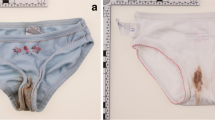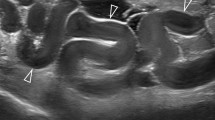Abstract
Penile fracture (PF) is an uncommon injury defined as the rupture of the tunica albuginea and corpus cavernosum of the penis, usually resulting from direct blunt trauma to the erect penis during sexual intercourse or masturbation. PF is one of the few urologic emergencies. This article reviews the status, contemporary management, and the controversies of the diagnostic approaches and therapeutic modalities of penile fractures. It is usually diagnosed only clinically with the history of the patient, inspection, and physical examination. However, additional imaging procedures such as cavernosography, ultrasonography, magnetic resonance imaging, and retrograde ureterography may also be indicated whenever the diagnosis or the extent of the severity and location of the rupture is not clear, and/or when an accompanying urethral injury is suspected. Although the diagnosis of PF is usually easily recognized, optimal therapy remains controversial. The most widely accepted approach for the treatment of PF is early surgical treatment, but some investigators still advocate nonoperative conservative management.
Similar content being viewed by others
References and Recommended Reading
Kilicarslan H, Gokce G, Kaya K, et al.: Surgical treatment of penile fractures. Ulus Travma Derg 2003, 9(1):54–56.
Nicolaisen GS, Melamaud A, Williams RD, McAninch JW: Rupture of the corpus cavernosum: surgical management. J Urol 1982, 30:917–919.
Mydlo JH: Surgeon experience with penile fracture. J Urol 2001, 166:526–528.
Zargooshi J: Penile fracture in Kermanshah, Iran: report of 172 cases. J Urol 2000, 164:364–366.
Ganem J, Kennelly M: Ruptured Mondor’s disease of the penis mimicking penile fracture. J Urol 2001, 159:1302.
Mostafa H: Rupture of the dorsal artery of the penis as a result of sexual intercourse. J Urol 1967, 97:314.
Shah DK, Paul EM, Meyersfield SA, Schoor RA: False fracture of the penis. Urology 2003, 61(6):1259. This reference is important because every symptom that may resemble or mimic penile fracture does not necessarily mean that it is really a penile fracture. Therefore, additional diagnostic instruments may be indicated whenever the physician has doubts about a penile fracture.
Beysel M, Tekin A, Gurdal M, et al.: Evaluation and treatment of penile fractures: accuracy of clinical diagnosis and the value of corpus cavernosography. Urology 2002, 60(3):492–496. This paper is important for the management of penile fractures. It reviews both the diagnostic methods and treatment outcomes of 40 penile fracture cases in a prospective study design.
Mydlo JH, Hayyeri M, Macchia RJ: Urethrography and cavernosography imaging in a small series of penile fractures: a comparison with surgical findings. Urology 1998, 51:616–619.
Dever DP, Saraf PG, Cantanese RP, et al.: Penile fracture: operative management and cavernosography. Urology 1983, 22:394–396.
Mydlo JH, Harris CF, Brown JG: Blunt penetrating and ischemic injuries to the penis. J Urol 2002, 168:1433–1435.
Asgari MA, Hosseini MR, Safarinejad MR, et al.: Penile fractures: evaluation therapeutic approaches and long-term results. J Urol 1996, 155:148–149.
Fedel M, Venz S, Andreesen R, et al.: The value of magnetic resonance imaging in the diagnosis of suspected penile fracture with atypical clinical findings. J Urol 1996, 155:1924–1927.
Ciciliato S, Bucci S, Liguori G, et al.: Ultrasonographic diagnosis of penile fracture. Arch Ital Urol Androl 2002, 74(4):302–303.
El-Bahnasawy MS, Gomha MA: Penile fractures: the successful outcome of immediate surgical intervention. Int J Impot Res 2000, 12(5):273–277.
De Lucchi R, Rizzo L, Rubino A, Tola E: Magnetic resonance diagnosis of traumatic penile fracture. Radiol Med (Torino) 2004, 107(3):234–240.
Uder M, Gohl D, Takahashi M, et al.: MRI of penile fracture: diagnosis and therapeutic follow-up. Eur Radiol 2002, 12(1):113–120. This paper emphasizes why MRI may be important in the diagnosis and treatment follow-up of patients with penile fracture. However, this does not mean that MRI should routinely be used in cases with penile fracture.
Chaljub G, Ernst R, Rodriguez G, et al.: Emergent MRI utilizing a 5 inch surface coil to evaluate for acute penile fracture. Emerg Radiol 2002, 9(1):35–37.
Heng CT, Brooks AJ: Penile fracture with complete urethral rupture. Asian J Surg 2003, 26(2):126–127.
Soylu A, Yilmaz U, Davarci M, Baydinc C: Bilateral disruption of corpus cavernosum with complete urethral rupture. Int J Urol 2004, 11(9):811–812.
Cetinel B, Akkus E, Arar O, Solok V: Penile fracture with urethral injury. Marmara Med J 1994, 7(4):196–197.
Choi MH, Kim B, Ryu J, et al.: MR imaging of acute penile fracture. Radiographics 2000, 20:1397–1405.
El Taher AM, Aboul-Ella HA, Sayed MA, Gaafar AA: Management of penile fracture. J Trauma 2004, 56(5):1138–1140.
Ishikawa T, Fujisawa M, Tamada H, et al.: Fracture of the penis: nine cases with evaluation of reported cases in Japan. Int J Urol 2003, 10(5):257–260.
Martinez Portillo FJ, Seif C, Braun PM, et al.: Penile fractures: controversy of surgical vs conservative treatment. Aktuelle Urol 2003, 34(1):33–36.
Naraynsingh V, Ramdass MJ, Thomas D, Maharaj D: Delayed repair of a fractured penis: a new technique. Int J Clin Pract 2003, 57(5):428–429.
Nane I, Tefekli A, Armagan A, et al.: Penile vascular abnormalities observed long term after surgical repair of penile fractures. Int J Urol 2004, 11(5):316–320.
Muentener M, Suter S, Hauri D, Sulser T: Long term experience with surgical and conservative treatment of penile fracture. J Urol 2004, 172(2):576–579. This manuscript evaluates and compares the long-term outcomes of surgery and conservative treatment in penile fractures. Despite that early surgery is the choice of treatment in penile fractures, this paper emphasizes that conservative therapy restricted to uncomplicated cases may lead to an equal outcome with surgery.
Author information
Authors and Affiliations
Rights and permissions
About this article
Cite this article
Akkus, E. Contemporary management of penile fracture. Current Sexual Health Reports 2, 17–20 (2005). https://doi.org/10.1007/s11930-005-0017-8
Issue Date:
DOI: https://doi.org/10.1007/s11930-005-0017-8




